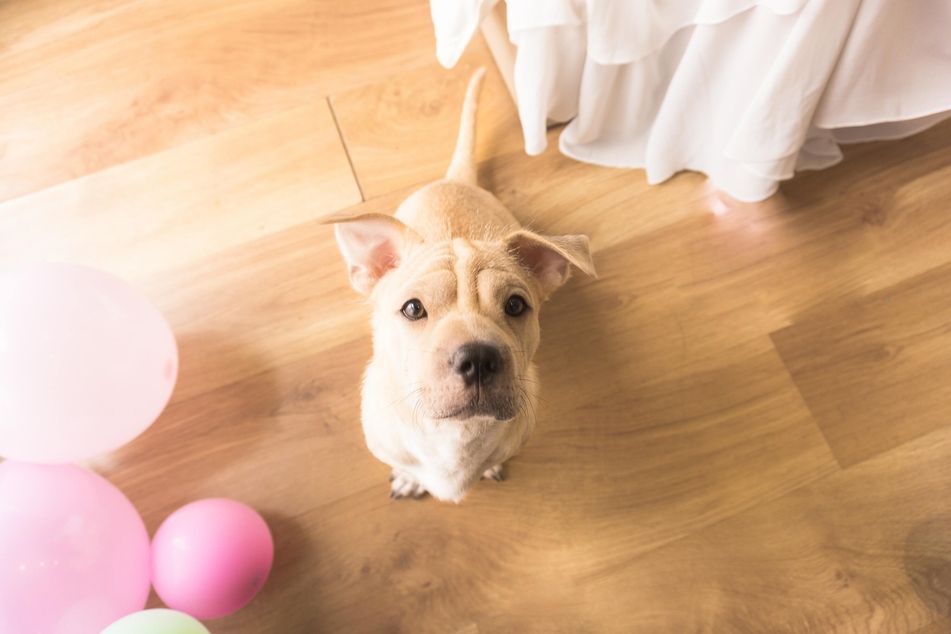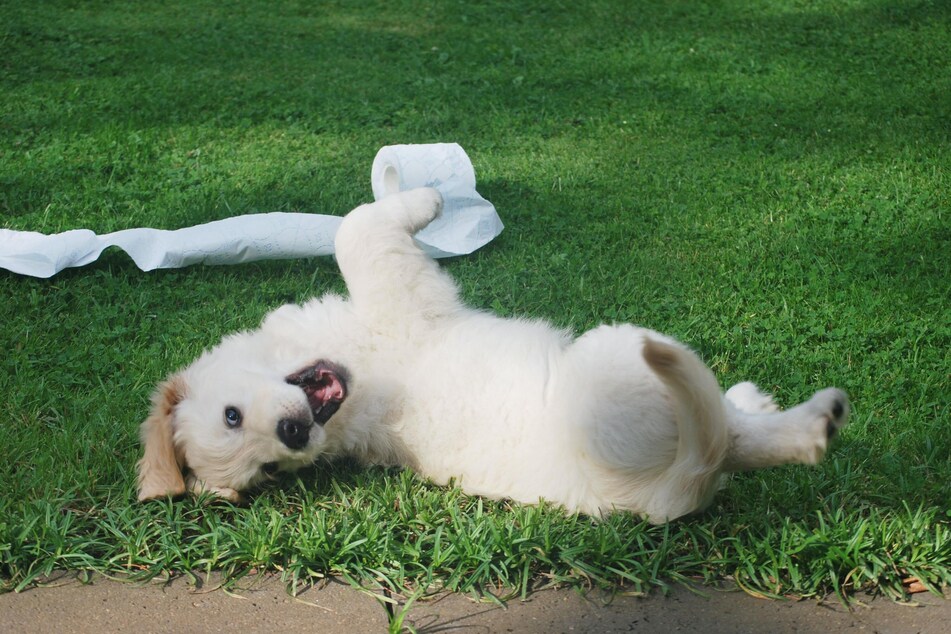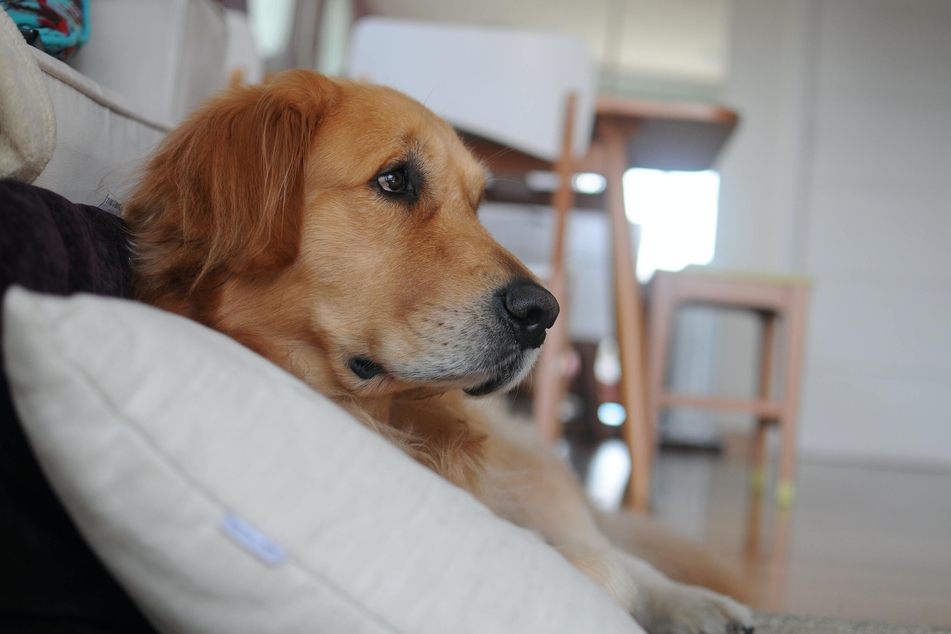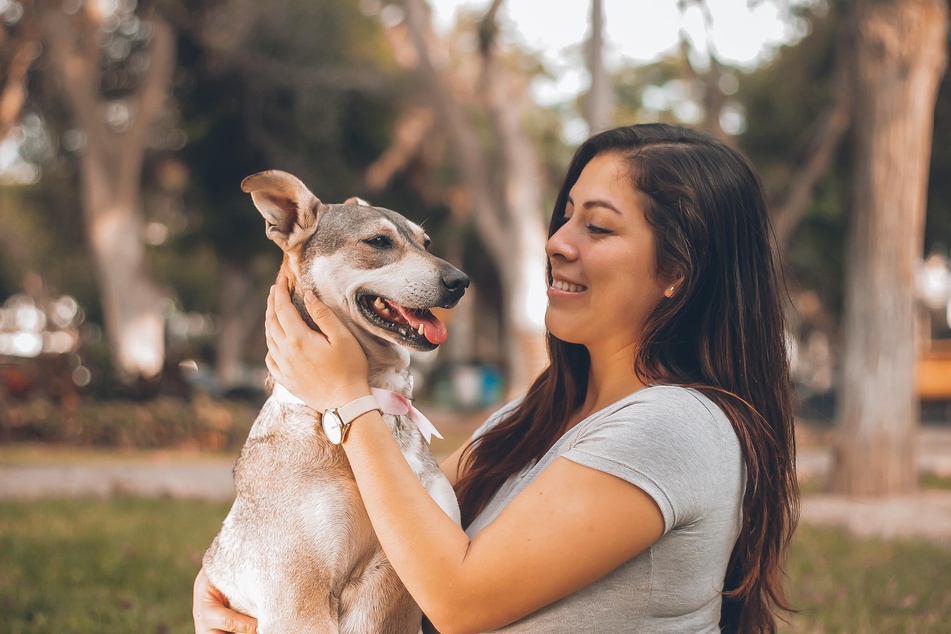Small puppies should become house-trained as quickly as possible. Sometimes, even adult dogs may have issues with cleanliness. How do you teach your dog to be house-trained, and what could be the reasons if it’s not working? This iHugDogs guide is here to help.
It’s not difficult to teach dogs to do their business outside because, fundamentally, they also want to keep their home clean.
Your dog has no malicious intent when it urinates or defecates indoors. Understanding your dog’s needs helps you teach them to do their business outside and identify any issues your pet might be facing.
Derived from hunting language, “elimination” is the term used when a dog does its business.
How long it takes for your dog to become house-trained cannot be stated generally. Give your furry friend and yourself time, as it works best without pressure and stress.
How do I house-train puppies or young dogs?
Puppies can usually control their sphincter at around 14 weeks of age. During the initial period, you establish the crucial foundations for the dog to become house-trained. Puppy training involves many considerations. To keep the dog clean indoors, several points need to be taken into account.
- The right responsible person: Puppy training should not primarily be the task of children. While they can assist in the process, the dog primarily needs authoritative consistency. Children may sometimes perceive the dog more as a toy and send the wrong signals to the animal. Calm and confident handling of the animal is crucial because, in moments of great excitement, joy, or stress, puppies may lose control over their sphincter.
- Observe and recognize needs: When your puppy becomes restless, whines, or sniffs around, you should take it outside. Its behavior signals when it needs to eliminate. Circling is a clear sign that the dog wants to do its business.

- A designated area for elimination: Your dog needs a designated outdoor area where it can eliminate. Always take it there, so it can get used to it and develop a routine. Choose a location near your home, so it’s quickly accessible when needed.
- Acoustic signals as confirmation: There are various ways to use acoustic signals. The simplest is to praise the dog after it has relieved itself outside. Don’t overdo the praise, as the dog might not fully empty itself and may need to go again later. A simple “Well done!” is sufficient. If you want to teach the dog to eliminate on command, you can use the instruction “Do your business!” while it is urinating or defecating. A clicker can also be used. However, make sure not to use the command or signal inside the house. It’s important to link praise, treats, and commands directly to the dog’s action so it can understand the connection.

- Regular walks: The more opportunities the dog has to eliminate, the better. Especially after playing, drinking, eating, before or after sleeping, dogs need to do their business. Dogs pay attention to the cleanliness of their home. They only soil it when they are in urgent need and have no other option. Regular walks with the puppy will relax your dog, as it knows it will be given enough opportunities to eliminate.
- Don’t just go out for elimination: If you only take the dog out to relieve itself, and then immediately return home, your dog won’t be able to eliminate immediately. It learns that it goes back inside once it has relieved itself, so it will delay doing so. It’s enjoyable for your dog to be outside. Take an extra walk with your dog after it has finished.
- Mistakes are allowed: If the puppy does happen to eliminate indoors, clean the spot thoroughly and without comment. Don’t scold or punish the dog. In this case, it would only get scared, causing stress. Under stress, it may lose control of its sphincter. Associating urination and defecation with negative emotions can be very painful for the dog. Moreover, dogs express their insecurity by leaving urine.
Why is my dog not house-trained or not becoming house-trained?

It can happen that your adult dog continues to eliminate in the house despite regular walks. If your dog is still not house-trained, there could be various reasons.
First, you should rule out any physical issues. It’s best to consult a veterinarian. If a dog suddenly eliminates indoors, it could be an indication of a possible illness. Potential reasons include bladder infections, intestinal infections, or digestive problems. Older dogs are prone to muscle weakness, making it difficult for them to control their sphincter. Consult a veterinarian and have your dog examined from a medical perspective.
However, other causes may lie in the dog’s psyche. It might have adopted behavioral patterns that involve eliminating indoors.
Changes in the dog’s position within the family can lead to insecurity. The dog may then want to mark its territory. For this, it prefers vertical surfaces in the house, such as the sofa or door frames. In this case, it requires clear leadership or neutering.
Excitement or joy can cause dogs to lose control of their sphincter. A typical situation is during greetings, although this mostly affects younger dogs. A simple tip is to greet the dog calmly or initially ignore it so that it can calm down.
Leaving puddles of urine in living spaces can also be a sign of submissiveness. Strong dominance by the owners makes the dog extremely insecure. Petting the dog between the front legs instead of on the head counteracts this.
If the dog is left alone often and for long periods, it may develop separation anxiety. When you leave the house, the animal is stressed and may lose control of its sphincter. Dog trainers and behavior therapies can help alleviate the dog’s fear.
Perhaps the dog is not offered enough opportunities to eliminate outside the house. Dogs cannot hold urine and feces for very long. After playing, drinking, eating, and before or after sleeping, they usually need to eliminate.
It’s possible that the dog was not taught to do its business outside. If you adopt an adult dog, for example, from a shelter, it may not have learned to be house-trained properly.

How to house-train adult dogs?
If your dog has eliminated in the house, clean the spots very thoroughly. Dogs prefer places that already smell of urine. Remember not to punish the dog, as it only causes stress for the animal.
A visit to the vet, who examines the dog for medical issues, is recommended in any case. Additionally, a conversation with the vet can help you understand your dog’s needs. Seek advice on whether supplements or medications might be an option for your furry friend.
If the dog has developed certain behavioral patterns, these can be unlearned. Time, patience, and consistency are crucial foundations for successful training. Depending on the cause of eliminating indoors, decide what your dog needs.
If your dog has never learned to be house-trained, take a few days off and train the basics with it. Practice with the dog to do its business outside, just like with a puppy.
Choose a location near your home for your dog to eliminate. If the place is reachable in a few minutes, your dog knows it won’t have to hold it for long. This is also beneficial for dog owners, as you can quickly take the dog outside. However, don’t just go outside because of that.

Possibly, setting up a dog toilet for emergencies or as a training pad can help, but it does not replace taking the dog outside.
By feeding regularly at the same times, the dog’s metabolism can be routine. Feeding, playing, eliminating, going for a walk, and sleep rhythms should remain constant for at least two weeks. A structured and clear daily routine helps the animal develop habits, eliminate on command, and relax.
If nighttime urination is the problem, it might be possible to remove the water bowl before bedtime and put it back in the morning. However, this measure should be discussed with a veterinarian. They can provide an assessment of how much water and food your dog needs.
If there is an underlying issue such as separation anxiety, seek help from a dog trainer. Consider whether attending a dog school for both the dog and yourself would be appropriate. There, you will learn how to correctly interpret the dog’s behavior and send it the appropriate signals.
To make your dog house-trained, patience, consistency, and plenty of time for the animal are crucial.


